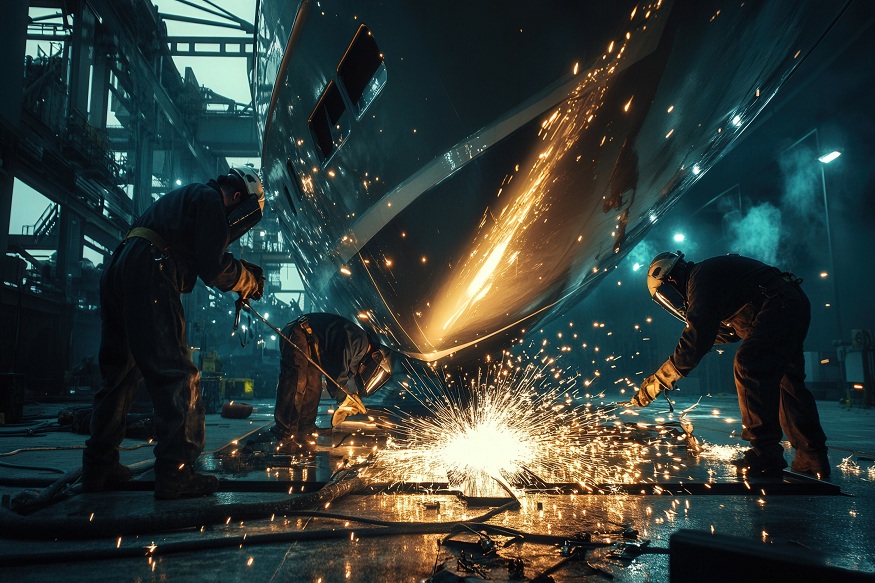Extreme heat environments present immense challenges for materials and structural design. As innovation marches forward, engineers develop innovative solutions to conquer high temperatures. Phenolic composite technology marks an iconic marriage between heat resistance and emerging progress. With unmatched fire, smoke and toxicity performance, phenolic materials take infrastructure safety and resilience to the next level.
Calling for a Game Changing Solution
As infrastructure ages across industrial sectors, owners look for materials that resist wear while protecting human life and their capital investments. New construction projects also demand innovation to uphold modern safety codes and performance expectations. With extreme heat disabling traditional materials, the stage is set for a game changing solution.
Any viable materials must deliver peerless heat resistance without sacrificing structural integrity, especially strength-to-weight ratios. They must also meet strict safety regulations by minimizing smoke and toxic emissions and ideally, the materials would deliver drastic reductions in maintenance demands from water and chemical exposure. An impossible combination, until the introduction of phenolic composites.
Phenolic Composites Answer the Call
Phenolic technology stems from a thermosetting resin mixed with structural fiber reinforcements. The rigid, fully cured phenolic matrix does not soften or melt even at temperatures approaching 1,000°F. Even direct flame impingement forms a protective char layer that insulates underlying material. Such inherent heat resistance permits lightweight phenolic structures to replace far denser traditional solutions.
The composite version of phenolic technology maximizes strength-to-weight ratios by embedding woven structural fibers. Carbon and fiberglass offer excellent properties while basalt fiber accelerates fire protection through inherent insulation effects. The fiber network lends shear strength and structural continuity before receiving the phenolic resin treatment. The fluid resin fully saturates the fibers, leaving no voids upon curing. This creates an exceptionally rigid phenolic composite that maintains mechanical properties despite temperature fluctuations.
According to the people at Axiom Materials, phenolic prepregs takes composite technology a step further by pre-impregnating fibers with phenolic resin at the materials stage. Prepreg sheets arrive ready to mold into custom parts, eliminating the messy resin infusion process onsite. For owners and engineers, phenolic prepreg delivers exceptional quality control straight from the factory.
Unleashing Innovation from Proven Origins
While profoundly innovative for infrastructure, phenolic composites draw from an extensive heritage. Phenolic prepregs have provided vital fire protection, blast shields and heat resistance in military and aerospace sectors since the 1960s. Missiles, aircraft and even spacecraft depend on phenolic composites to this day. In infrastructure, their early success in rail systems, industrial ovens and engine components is expanding.
With phenolic technology conquering extreme aerospace environments for decades, adapting material specifications for modern infrastructure came naturally. Standards organizations recently codified installation guidelines, material ratings and testing procedures to unleash innovation across transportation, construction and other sectors. Inheriting proven aerospace pedigree, infrastructure phenolic solutions showcase transformational improvements without reservations about their safety or capabilities.
The Future Burns Bright
Phenolic composites usher in a new era of heat and fire safety for infrastructure projects. Their unique resin chemistry delivers unmatched heat resistance surpassing 1,000°F. Strength-to-weight ratios top alternative solutions with exceptional rigidity and tolerance. Yet phenolic materials also drive down maintenance as they shrug off water, UV rays and chemicals. As the safety demands, longevity challenges and heat requirements intensify for infrastructure, phenolic technology provides a game changing solution.
Conclusion
Phenolic composites carry structural infrastructure into new territory with radical improvements to heat resistance and fire protection. Pushing traditional materials aside, their unmatched thermal properties, strength and durability promise to revolutionize infrastructure safety in extreme environments. The future of infrastructure safety assuredly burns bright with the advance of phenolic composites across transportation, construction and industrial projects on the horizon.

